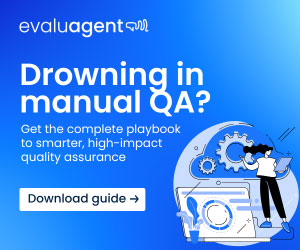Active listening is one of the most powerful tools a customer service advisor can use – but it’s often underestimated or misunderstood.
In fast-paced call centre environments, the ability to truly hear a customer’s needs (both spoken and unspoken) can make the difference between a poor and exceptional experience.
In this article, we share four exercises to help train active listening in the call centre, after defining what it is and why it’s so important.
What Is Active Listening in Customer Service?
Active listening skills for call centre agents involves listening to not only what is being said, but the vocabulary and tone that is being used as well.
Contact centre advisors should use active listening to fully engage with and support customers. In this sense, it also means thinking about what’s not being said.
A key element, according to Caroline Cooper, a trainer and consultant at Naturally Loyal, is “letting the customer know that you’re listening and, of course, on the phone that’s much more difficult than in a face-to-face situation.”
“To do this on the phone, mirror the caller’s vocabulary and interject with lots of ‘yes’s’ and ‘uh-huh’s’, to signal to the customer that they are being listened to and supported.”
Why Is Active Listening Important?
Active listening plays a crucial role in effective customer service, as it enables advisors to fully understand the customer’s issue and respond appropriately – rather than jumping to conclusions.
This skill helps advisors get to the heart of the matter quickly and confidently, avoiding miscommunication and repeated explanations.
From the customer’s point of view, being truly heard builds trust and encourages them to be more open and honest, which in turn helps advisors offer more relevant support.
As a result, advisors can ask smarter questions, resolve issues more efficiently, and lower call handling times, as well as offering a better customer experience.
Four Active Listening Training Exercises
Here are four training activities that will help you to develop active listening in your contact centre.
Exercise 1: Questions and Answers
This quick-thinking exercise highlights how easy it is to miss key information when we’re not actively listening, even during seemingly simple tasks.
How It Works
Without telling your team the purpose of the activity, ask them to write down answers to the following two questions:
- How many of each species did Moses take into the ark?
- You are driving a bus, which leaves Stoke at 8:30 with 23 people on board. It stops in Leicester, dropping off ten and picking up four more passengers. It then travels to Milton Keynes, dropping off five and picking up six. It arrives in London two hours later. What was the driver’s name?
Once everyone has written their answers, review them as a group:
Correct answers:
- None, because it was Noah, not Moses.
- You, because you are the bus driver.
Discuss the results – most people will get at least one question wrong – and explore why.
Key Takeaways
- We often hear what we expect to hear, not what’s actually being said.
- It’s easy to miss critical details if we’re not fully focused.
- Active listening means listening beyond assumptions and checking our understanding, especially in customer conversations.
Exercise 2: The Debate
This group exercise brings to light how often we listen to respond rather than to understand, encouraging advisors to stay focused, present, and respectful of others’ viewpoints.
How It Works
Gather a group of at least five advisors and have them sit with their backs to the rest of the team to eliminate visual cues. Then, follow these steps:
- Appoint a chairman (a volunteer works well).
- Choose a divisive topic that’s likely to spark multiple viewpoints (e.g., remote work vs. office work).
- Set ground rules:
- Raise your hand to speak
- Wait for the chairman’s permission
- Before speaking, accurately summarise the previous speaker’s point
- The chairman may revoke permission if the summary is incorrect
- Ask participants to pay attention to how they feel during the debate and note tonal shifts.
- Let the debate run for around 10 minutes, ensuring everyone has a chance to speak. Join in yourself if needed.
- As the facilitator, observe participants’ body language and how accurately they summarise, including word choices and tone.
- Debrief by asking the group:
- How did it feel to listen and summarise?
- Was it difficult to wait before responding?
- How did it feel when someone didn’t reflect your point accurately?
Key Takeaways
- We need to discipline ourselves to listen and not to be selective and only hear what we want to hear.
- We realise how body language gives away when we have stopped listening, and even when people can’t see you, how your body language affects your tonality.
- We recognise what it’s like to feel as though we aren’t being listened to, so we need to think about how we can avoid our customers feeling like that.
Exercise 3: A Cottage in Devon
This interactive role-play helps advisors sharpen their listening and questioning techniques, while putting themselves in the customer’s shoes during a discovery-based conversation.
How It Works
Present a fictional scenario to the group: you’re all trying to rent a holiday cottage in Devon (or any other preferred location). The activity unfolds in the following stages:
- Group Brainstorm – As a group, create a wishlist of cottage features—e.g. number of bedrooms, pet-friendliness, garden, parking, sea view, etc.
- The Cottage Advert
- Reveal a minimalist ad:
- “Holiday Cottage For Rent – Call [phone number]”
- No other details are provided.
- Role-Play: Closed Questions Only
- Have one person role-play a call to the cottage owner using only closed questions (yes/no answers) to find out if the property meets the group’s criteria. This often leads to a frustrating or unclear outcome.
- Open Question Brainstorm
- Reflect on the limitations of closed questions. Ask the group to suggest open-ended questions that would better help them uncover what they need to know.
- Optional Pair Work
- Group 1: Cottage owners – define what the cottage is like
- Group 2: Holidaymakers – set clear rental criteria
- Run the role-play again using open questions, and then reverse the roles for a new scenario (e.g. buying a car, booking a hotel).
Key Takeaways
- Role-playing real-life scenarios helps advisors improve their active listening and questioning skills.
- We saw firsthand how closed questions limit conversation, while open questions unlock more relevant details.
- By switching roles, advisors gain empathy for customers trying to communicate needs with limited information.
Exercise 4: Good Learn
This exercise uses real-life examples of call mishaps to help advisors reflect on what went wrong, learn from the experience, and apply corrective measures to avoid similar mistakes in the future.
How It Works
- Share Call Recordings – Play a call recording where an anonymous advisor failed to apply active listening effectively. The advisor’s identity should be kept anonymous to ensure a non-judgmental, learning-focused environment.
- Group Reflection – After listening, ask the group to reflect on what happened in the call. Discuss what led to the mishap and what could have been done differently.
- Brainstorm Solutions – Invite everyone to contribute one idea or strategy that could have prevented the issue. Encourage open dialogue so that the team learns from each other’s perspectives.
- Partner Discussion – Ask each team member to share with a partner:
- One key takeaway from the discussion
- One thing they will focus on to avoid making the same mistake in the future.
Key Takeaways
- We know what “bad” looks like and how to avoid it.
- We recognise how a failure to use active listening can negatively impact the customer experience.
- We understand that mistakes do happen, and the important thing is to learn from them.
What Are the Barriers to Good Active Listening?
There are lots of hurdles that prevent us from using active listening well in the call centre, and advisors need to guard against them.
So, when training active listening skills for call centre agents, warn advisors not to do any of the following:
- Wait for gaps and pauses to “jump” in with a response
- Interrupt the customer before they have finished (sometimes they need to just get things off their chest)
- Feel nervous about getting something wrong, knowing that calls are being monitored
- Get defensive over the customer’s view of the company
- Give in to a willingness to talk rather than listen
- Think that you’re right and they’re wrong
- Being too hell bent on a script that simply doesn’t answer the customer’s issue
If the advisor gives in to any one of these impulses, their ability to listen really suffers. But there are other barriers too.
For example, sometimes advisors feel embarrassed to ask the customer to repeat themselves, but it’s far better to check that you’ve understood the customer’s query correctly and repeat that back to them, than to miss potentially key information.
“Distractions are of course a big issue and this includes the obvious examples – such as the people around the advisor, noise and clutter – as well as emotional clutter.
This is something that team leaders need to be aware of – whether it’s physical pain or discomfort such as hunger, feeling cold, a headache or fatigue or emotional clutter.
Examples of emotional clutter can include frustration with the customer, system or processes, taking things personally, or simply having a bad day – each of these things will impact the advisor’s ability to keep up with the customer.”
To help reduce this emotional clutter, team leaders need to be trained to have difficult conversations with advisors and get to know their teams personally, to pick up on any signals of discontent.
Finally, the last barrier is making assumptions. This involves the advisor hearing the problem and assuming that they have the right solution as they may have come across a similar issue before. But what if that fix isn’t right for this particular customer?
“If you’ve handled the same query three or four times that day already, it’s very easy to fall into assumptions. You just need to remember that one size doesn’t fit all!” – Caroline.
Tips to Better Train Active Listening
Here are three tips to help advisors move beyond the barriers listed above and help them to better use active listening.
Encourage Note-Taking
Having a pen and paper at the ready to make notes to key references that the customer makes while talking can help you to remember key points that you may need to reflect on later.
“One thing that really helps me to listen is to take copious notes, not typing but actually writing stuff down, because as you’re writing it can become a lot easier to realise what’s missing.” – Caroline.
Once the customer has finished speaking, refer back to your notes to move the conversation forward. If you were focused on keeping these key points in your head as the customer was speaking, you were not listening closely enough to what the customer was saying.
Reflect Back the Customer’s Query
You, as the advisor, shouldn’t feel embarrassed to make comments such as “let me just check that I’ve got all the information I need” or “what I’m hearing is…”, as they can improve the experience, not harm it!
When you use comments like this, you confirm your understanding of the problem and, in doing so, take the “weight” of the issue away from the customer.
Clarifying also has another benefit in that it’s not good to point out any contradictions in what a customer has told you, so, instead of pointing a contradiction out to them, say that you just want to double check, so you’re not accusing them.
Use the Word “And” and Not “But”
To get the most value out of active listening, you need to set up the right kind of conversations, and there are lots of tips and tricks to doing this well.
For example, Caroline says: “It’s quite common for advisors to start a sentence with a positive to ‘set up’ a negative and use ‘but’ as the link word. However, when you say the word ‘but’ the customer will forget the positive and focus on the negative.”
“So, swap the word ‘but’ with ‘and’ as it is a softer link, which will help to create a more positive conversation, from which better insights can be drawn from the customer.”
For more tips to improve listening skills, read our article: Top Tips to Improve Listening Skills on the Phone
What Else Can You Do to Improve Advisor Listening Skills
The obvious answer to this question is to make more time for running training exercises like those above, but it is often just as valuable to give the advisor positive feedback.
“Giving feedback when the advisor has done something really well reinforces the good behaviours that you want from the team. This can be just as important as corrective coaching.
Having said that, picking up very quickly where advisors have struggled and asking the team member to identify what made that conversation difficult – highlighting some of the words and phrases that they have used which signal they weren’t using active listening – is very important.” – Caroline.
Some examples of words and phrases which often indicate that the advisor is not using active listening in their calls are included in the graphic below:
Phrases That Signal Advisors Aren’t Using Active Listening
- “It’s company policy”
- “If you check our website…”
- “As I’ve already said…”
- “There is nothing I can do”
- “I’m sorry you feel that way”
Also, we’ve discussed how emotional clutter can influence an advisor’s ability to listen, so giving team leaders training to have the difficult conversations is key, as well as giving them the space to get to know their team and identify the warning signs.
Other pieces of advice for helping to improve the listening skills in your contact centre include:
- Remove time-based metrics (e.g. Average Handling Time (AHT)] from advisor targets)
- Reduce background noise
- Improve resource planning
There is also technology that can help to improve listening skills, with speech analytics being one option that more and more contact centres are choosing to employ.
Niels Sören Richthof, a product manager at Enghouse Interactive, says: “Real-time speech analytics can give advisors feedback as they’re talking to help improve performance, but the technology can also feedback data to quality analysts, to suggest the calls that will be most beneficial to monitor.”
According to Niels, this data will provide information on:
- Cross-talking – Does the agent interrupt the customer. Or vice versa?
- Pause – How long are the pauses and spoken passages?
- Speaking rate – Is the agent speaking at a moderate tempo?
- Speech ratio – How much of a call is the agent speaking and how much the customer?
- Stress level – What are the emotions of agent and customers?
- Volume – How well can the voice of the agent be heard?
This information will help analysts to highlight any calls where advisors may have struggled and where the most can be learned, in terms of listening.
For more on the topic of improving listening in the contact centre, read our articles:
- Customer Service Skills: How to Develop Empathy, Listening and Knowledge
- How to Improve Your Customer Service Listening Skills
- Clear Calls Faster With Effective Listening
Author: Charlie Mitchell
Reviewed by: Hannah Swankie
Published On: 1st May 2019 - Last modified: 6th Oct 2025
Read more about - Skills, Analytics, Caroline Cooper, Editor's Picks, Enghouse Interactive, Fun and Games, Listening, Niels Richthof, Skill Development, Soft Skills, Training and Coaching















